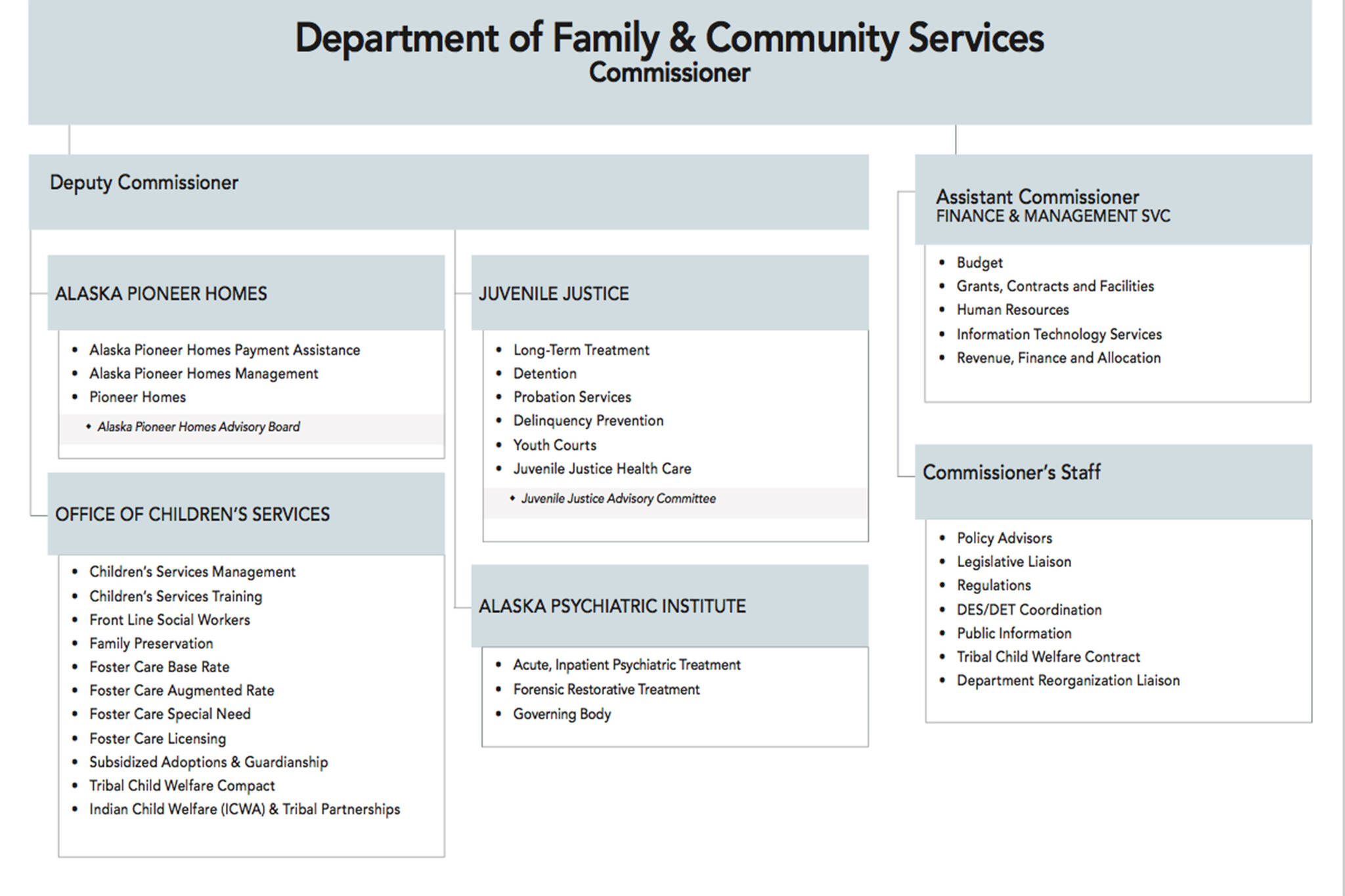The state’s largest department is poised to become two separate sizable departments —again.
An executive order from Gov. Mike Dunleavy is expected on the first day of the 2022 legislative session that would split the Alaska Department of Health and Social Services into a Department of Health and a Department of Family and Community Services.
The proposed split was presaged by Dunleavy’s budget proposal, which was shared yesterday. In that budget, funding is proposed for the two new departments rather than the Department of Health and Social Services.
Late last year, Dunleavy and state officials shared a similar plan to create separate departments via executive order. That proposal, which met opposition from tribal health organizations and lawmakers, fell through in March when Dunleavy withdrew the order, citing technical issues.
Department of Health and Social Services Commissioner Adam Crum said Thursday in a news conference that the fundamental difference between the two attempts is time.
“We had talked about this internally a lot up until the release last year, but the big difference was we had done stakeholder engagement on a minimal basis,” Crum said.
He said that was because of multiple factors, including a spike last fall in the number of COVID-19 cases in the state.
“With this, we have really taken the time and based on initiative from our legislative partners to push this message out and to really address and assuage any concerns from the general public and stakeholder groups. Also, there were a couple of items — “drafting errors” — that were identified by Leg Legal that have been corrected.”
Crum said as a result of outreach, each proposed department would include a transitional liaison.
Crum said the split may eventually realize savings, but that is not why it is being pursued. He also said it is not a step toward privatization. Privatization through an executive order would be inappropriate under state statute, Crum said, and it would require a long and drawn-out process.
“The main heart of this is appropriate size of government,” Crum said. “What we have here at Department of Health and Social Services is such a beast that we are the budget of 12 other state departments, the governor’s office, the court system and the Legislature combined.”
Additionally, Crum said it is hoped the change would improve services for Alaskans.
Crum said it will cost just less than $2 million for the split to happen. He said the proposal also entails adding 10 employees and the reclassification of 10 others.
“This is a small investment for us to actually step up and do the appropriate-sized action,” Crum said.
Under the proposed reorganization, the divisions of Public Health, Behavioral Health, Health Care Services, Senior and Disabilities Services and Public Assistance would fall under the Department of Health’s umbrella, according to an organizational chart. A Department of Family and Community Services would cover Pioneer Homes, the Office of Children’s Services, the Division of Juvenile Justice and the Alaska Psychiatric Institute.
“The public-facing departments —think, like OCS, Health Care Services, Public Health —there is no change to those divisions,” Crum said. “These divisions will stay in tact, they do not change offices, they do not change leadership, they do not change email addresses. The brunt of this split is going to fall on an internal division, which we call Department of Support Services or Financial Management Services.”
Crum said an executive order is an appropriate way to pursue the split, and is a better mechanism for the proposed reorganization than legislation.
“By doing it as an executive order, services have maintained continuity of operation with a very clear date of action,” Crum said. “So people know there will be disruption, so if there is a change it would be around then, but it would be a hiccup so to speak. Whereas with legislation, legislation can be changed throughout the process.”
In the past, He cited Article III, Section 23 of the state constitution as establishing the governor’s ability to reorganize the state’s executive branch.
Once the order is submitted during the upcoming legislative session, the Alaska State Legislature will have 60 days to disapprove of it via a resolution supported by a majority of lawmakers in a joint session, according to state statute. The change would be effective as July 1, 2022.
Sylvan Robb, assistant commissioner for DHSS, said work toward the split will need to be continuous through the effective date.
If the split does go through, commissioners will need to be chosen for each department. Those selections would be at the discretion of the governor.
“It would be up to the governor to name the next commissioner,” Crum said. “I would put my name in the hat to be the commissioner of the Department of Health.”
Crum said he would expect an appointee to go through the confirmation process in 2023.
In an email, Dunleavy spokesperson Jeff Turner said the selection process for a new commissioner will begin next year.
• Contact Ben Hohenstatt at (907)308-4895 or bhohenstatt@juneauempire.com. Follow him on Twitter at @BenHohenstatt.

